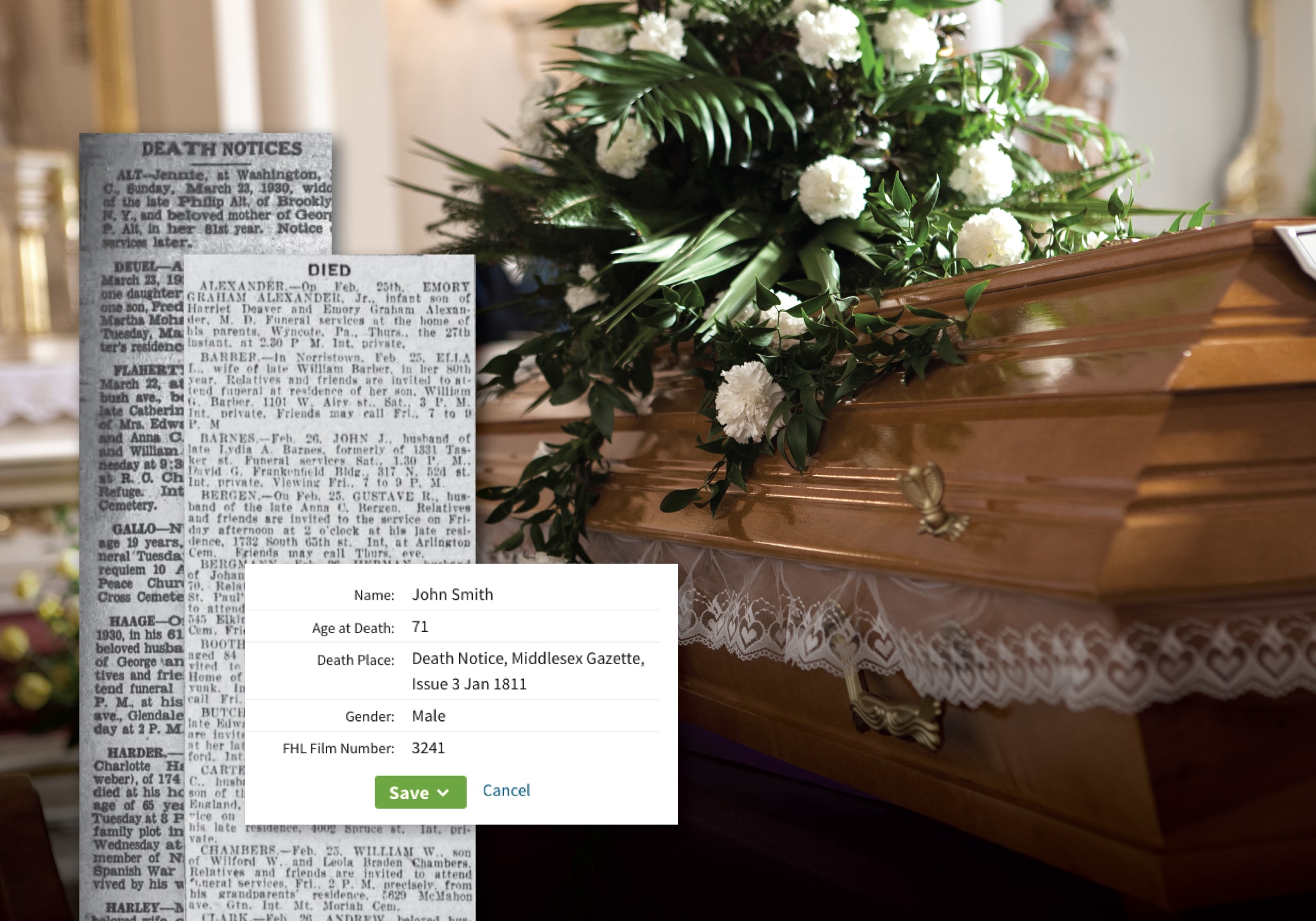Ancestry® Family History
Death Notices
When a loved one dies, it’s important to alert family and friends and often to let people know about the funeral arrangements. Historically, the best way to do this was to submit a death notice to the local newspaper, which was read by most people in town. These paid announcements listed the date of death and details about the memorial service. Unlike obituaries, death notices are typically short. But they can provide valuable details about the deceased person's life and family, which can help you create a richer family story.

Death Notices and Obituaries
Death notices are often confused with obituaries, because they are similar in nature.
Obituaries are typically more complete biographical sketches that recount someone's life and highlight their achievements. There might be quotes or anecdotes to help bring the description of that person to life.
While an obituary in The New York Times might be reserved for more prominent residents, local newspapers may cover anyone who died in the area. Regardless of where they appear, obituaries, usually name survivors, like the spouse, children, and grandchildren. And they often include funeral notices.
A death notice is often more functional than an obituary. It typically lists the person's name, date of death, and sometimes survivors, plus information about the memorial service, burial, and donations. It also serves to alert business associates or creditors that someone has passed away.
Though still common today, death notices were especially important in the days before the internet and telephones. Families had to get out funeral notices right away. Local newspapers were the main source of information. Sometimes they sent death notices to multiple newspapers, like both the town paper and the regional paper. Since families often stayed in the same community for generations, they could bet that most people they knew would read the notice.
Death notices may be brief, but they can help you uncover your family story. Since they include a person's name, age, date of death, and survivors, they could lead you to other relevant documents, like marriage records or census records. The newspaper's location itself is a clue about where your ancestor lived. If the funeral notice includes the name of a church, that may have been your ancestor's regular house of worship, which could have other useful records for learning more about them.
Beyond Obituary Notices and Death Notices
Death and obituary notices aren't the only types of records related to someone's passing. There are often a variety of documents to explore. When you locate one record, it can lead you to other death records. Some of these include:
Death Certificates
These records can reveal your ancestor’s place and date of birth, place and date of death, and cause of death.
The Social Security Death Index (SSDI)
This lists basic information such as the date of death and last known address where the U.S. Social Security benefits were sent. The SSDI is most useful when looking for relatives who died before 1962. When used to order the original Social Security application, information found in the SSDI could reveal other details, such as your ancestor’s parents’ full names and where they were working at the time of their application.
The U.S. Federal Census Mortality Schedules
If you have a relative who died in the 19th century, you may find other biographical details in these records, which list people who died in the year before certain U.S. Census years (1850-1885).
Funeral Home Records and Tombstones
Funeral home records may include not only the cause of death, but also details like the deceased’s occupation, residence, and age. You might even find a photo of an ancestor’s tombstone, which if it has symbols, could yield clues about their religious affiliations and fraternal organizations they may have belonged to.
Learn More About Your Family Story With Death Records
Death notices are a fascinating place to learn more details about your family, like if your ancestors were long-lived and who their loved ones were. They can give you key facts that help you find additional details in other records. See what death records on Ancestry® can reveal about your family story.